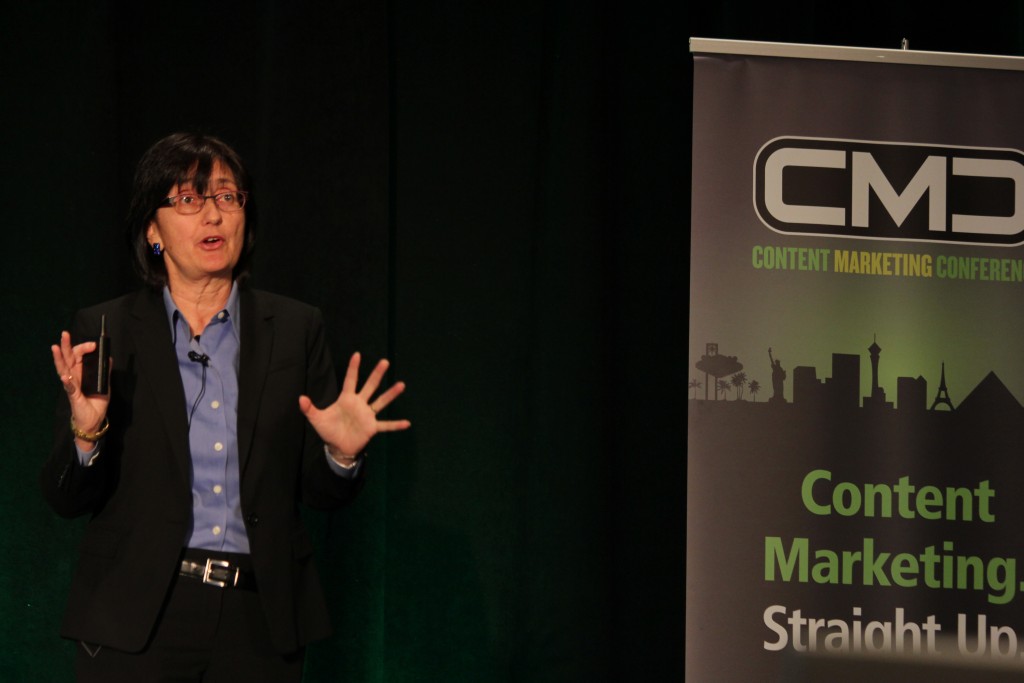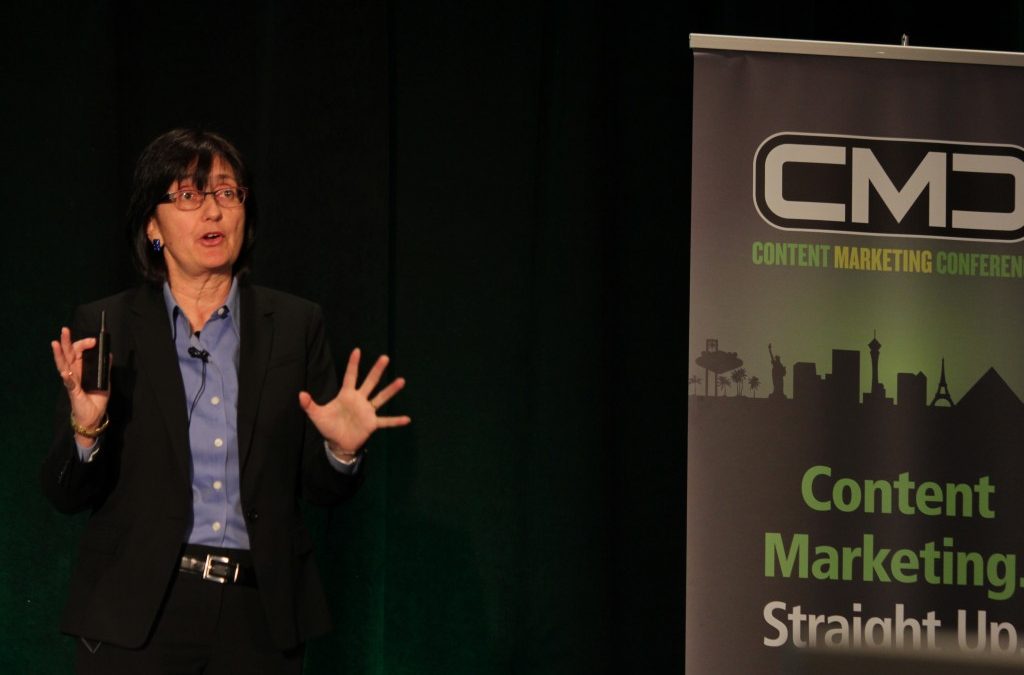A lot of people may think that they are unique, that the way they consume content on the Internet is entirely their decision. This is not quite accurate, Nancy Harhut told attendees of the Content Marketing Conference in her Content Creation presentation, “How to Create Brain-Craving Content in 5 Easy Steps.” Harhut is the chief creative officer for Wilde Agency, an organization that uses behavioral science to create effective marketing strategies. While people certainly can focus on different aspects of content based on their needs, interests and experience, their brains guide a lot of what they look for and what they remember. With 4 million new Facebook posts and 1,400 new blog posts every minute, everything that a business does to turn readers’ brains to target information has a greater potential to improve engagement and conversion rates.
Step 1: Remember some words count more than others
While most writers try to make some variations in the kinds of words they choose, these changes could make positive or negative differences in the way readers consume the content. Harhut argues that the right words:
- increase readership
- influence the way we absorb information
- incite action
“Some words have the ability to reach out and pull the eye in,” Harhut says. Companies should emphasize those eye-grabbing words. For example, the word “new” has many possible useful synonyms, such as “now,” “introducing” and “announcing.” These terms tend to perform equally well. However, the word “free” has no effective substitute. She notes that writing in the second person and asking questions consistently outperform in tweets. She also admonishes writers to pay careful attention to the verbs that you select, and choose the ones that are likely to lead to maximum impact.
 Step 2: Always opt for easy
Step 2: Always opt for easy
Harhut claims, “People prefer things that are easy to think about and easy to understand.” She believes that when the content is simple to absorb, your prospective customers feel more confident about making a decision. You create this environment for your readers through copy and design. Harhut suggests using short, active sentences that identify specific benefits for your readers. Rely on a conversational tone whenever possible. “If people find it hard to read, they will believe that what it is is hard to do,” she advises. This underscores the importance of a design that makes actions obvious, including adding a big button that anyone can see.
Step 3: Design for the mind’s eye
As much as 90 percent of the information in the brain is visual, Harhut argues. She recommends making creative but strategic use of images with your content. She makes a surprising note that pictures increase engagement of your content, even if the image does not aid the content in any particular way. People are hardwired to look for faces, so pictures of people with visible faces are particularly helpful. You might use the image’s eyes to direct readers to target parts of the page. Create graphs of quantitative content, to add scientific credibility. Harhut cautions people not to ignore the relevance of color images versus black-and-white, as well. Color in images leads to more shares in social media, while pictures in grayscale encourage people to focus on the key elements of the image.
Step 4: Tell ‘em the story
In the effort to create effective content that avoids dragging on too much, Harhut says that sometimes writers miss out on a great opportunity to tell an excellent story. She claims that stories allow readers to make their own conclusions, and, “While you might argue with what someone else tells you, you rarely argue with your own conclusion.” Harhut asserts that there are many different ways to tell stories. When you put one on a page, you should include the desired action as a Trojan Horse in the story, instead of making the suggestion overt. She says that if you can get customers to tell their own stories on your social media accounts or your website, you will prompt others to read more and encourage the writers to be more loyal to your brand.
Step 5: Add the emotion quotient
The balancing act between triggering emotion in readers and prompting a rational decision may be less complicated than you think, Harhut argues. She recommends that businesses emphasize more of the emotional components of the content, reaching out to address readers’ anxiety, awe, wonder and fear. Consistently playing to customers’ fear of missing out or losing benefits works best. In fact, using negative superlatives such as “worst” or “final” outperforms better than positive superlatives like “best.” Consider where your readership is at the moment, and create content that solves their current problems, or creates a sense of urgency for them.
Turning readers’ brains to engaging and useful content is more of a matter of science than you might ever have expected. Human brains look for certain kinds of attractive words and images that make it easier for them to digest the information and bypass difficult conclusions at all costs, according to speaker Nancy Harhut. When your content prompts the right kind of action from your prospective customers, the result is automatic because it is biological. Triggering your readers to make a target movement turns shares into clicks, and clicks into conversions.

